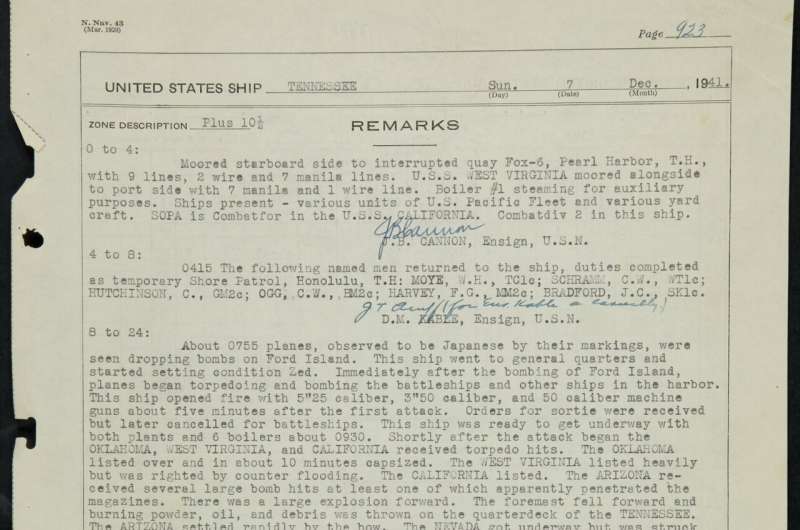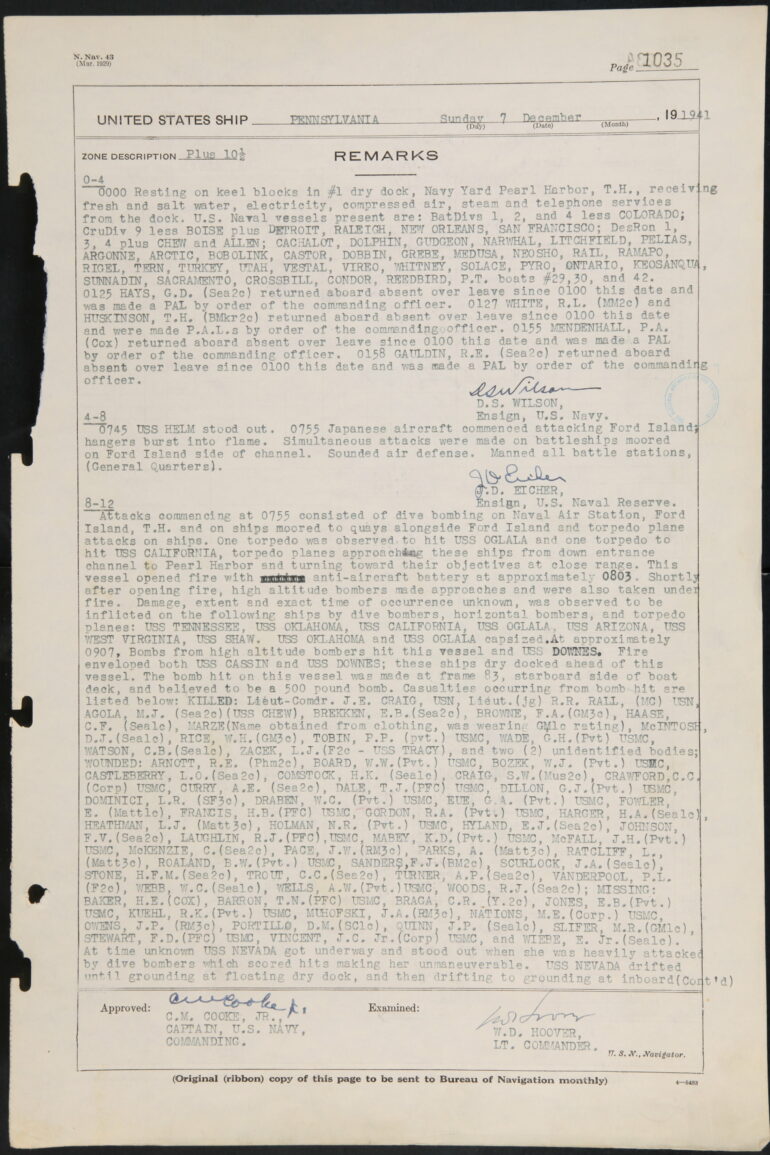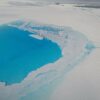Weather data from several ships bombed by Japanese pilots at Pearl Harbor has been recovered in a rescue mission that will help scientists understand how the global climate is changing.
Crew members aboard various vessels—such as the USS Pennsylvania and the USS Tennessee—died when their battleships were targeted in December 1941. Despite these losses, many boats returned to service during the Second World War and US naval servicemen continued their daily duties, which included recording weather data.
A research paper, published in Geoscience Data Journal, tells the story of the recovery of World War II weather data that comes from 19 US Navy ships. Its rescue was made possible thanks to the hard work of over 4,000 volunteers who transcribed more than 28,000 logbook images from the US Navy fleet stationed at Hawai’i from 1941–1945.
Previous studies have suggested these years were abnormally warm. The new dataset, encompassing over 630,000 records with more than 3 million individual observations, will help to show whether this was the case.
Dr. Praveen Teleti, the University of Reading research scientist who led the research, said, “Disruptions to trade routes in World War II led to a significant reduction in marine weather observations. Until recently, records from that time were still only available in classified paper documents. The scanning and rescuing of this data provides a window into the past, allowing us to understand how the world’s climate was behaving during a time of tremendous upheaval.
“There are two sets of people we need to thank for making this mission a success. We are very grateful to the global team of citizen scientists for transcribing these observations and creating a huge dataset that includes millions of entries about air and sea surface temperatures, atmospheric pressure, wind speed, and wind direction.
“The greatest respect must go to the brave servicemen who recorded this data. War was all around them, but they still did their jobs with such professionalism. It is thanks to their dedication and determination that we have these observations 80 years on.”

Ship: USS Tennessee BB-43. Logbook: 20 December 1941. © University of Reading
Data from devastated ships
The logbooks used in the project come from 19 different ships, including battleships, aircraft carriers, destroyers, and cruisers, most of which played pivotal roles in World War II events.
Many ships that data was recovered from were present at Pearl Harbor during the attack by Japanese bombers on 7 December 1941, although all ships listed in the study saw action in the Pacific at some point during the war. USS Pennsylvania was hit when Pearl Harbor was attacked by the Japanese air force in December 1941. One bomb fell on the battleship and caused the deaths of nine servicemen, but it remained in service.
The USS Tennessee was bombed twice in December 1941, resulting in the death of five servicemen. It returned to service in February 1942.
Future climate studies
Observations from naval vessels were the primary sources of marine observations for the World War II period but many records were destroyed as an act of war, or simply forgotten due to the length of time they were considered classified.
The recovered dataset reveals how wartime necessitated changes in observation practices. For example, more observations were taken during daytime than nighttime to reduce exposure to the enemy ships and avoid being detected. It is believed that changes such as this could have led to slightly warmer temperatures being recorded, meaning today’s history books show a period of abnormal warmth in global datasets during World War II. The new data will help resolve this uncertainty.
Few or no other digitized observations exist from the Indo-Pacific and Far East during World War II. The rescued data will help scientists correct and fill gaps in existing datasets and ensure they can better understand how global climate has evolved since the early 20th century.
More information:
Digitising weather observations from World War II US naval ship logbooks, Geoscience Data Journal (2023). DOI: 10.1002/GDJ3.222. rmets.onlinelibrary.wiley.com/doi/10.1002/gdj3.222
Provided by
University of Reading
Citation:
Weather observations from bombed battleships’ logbooks help scientists understand climate change (2023, September 18)



